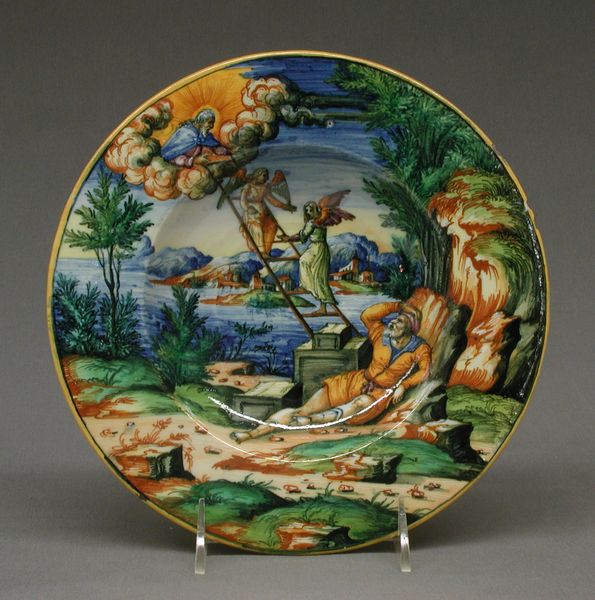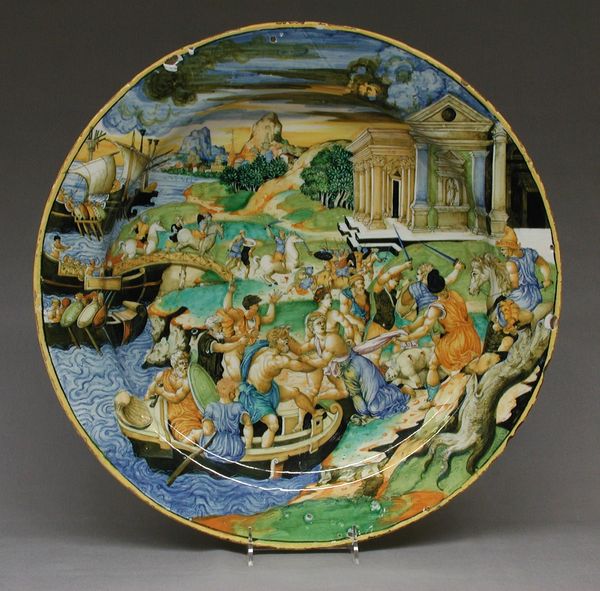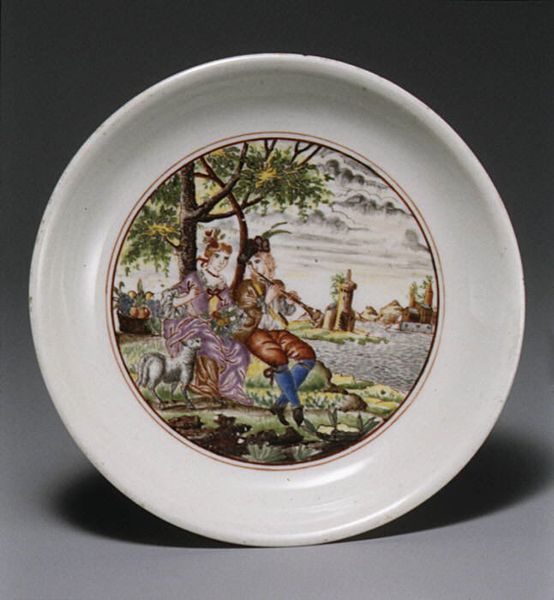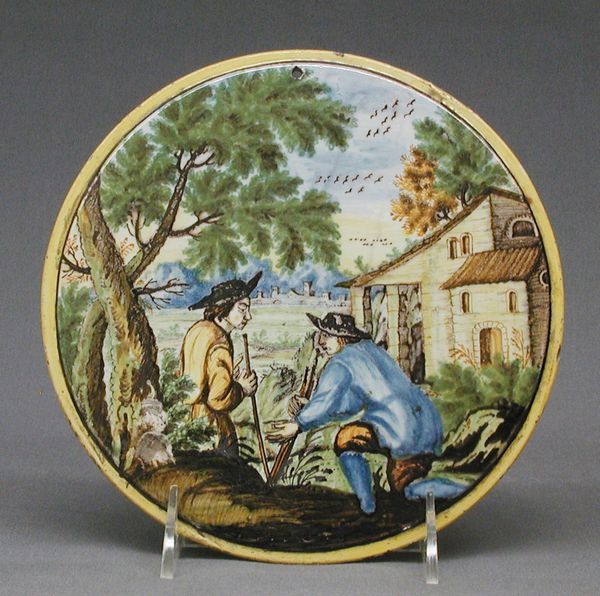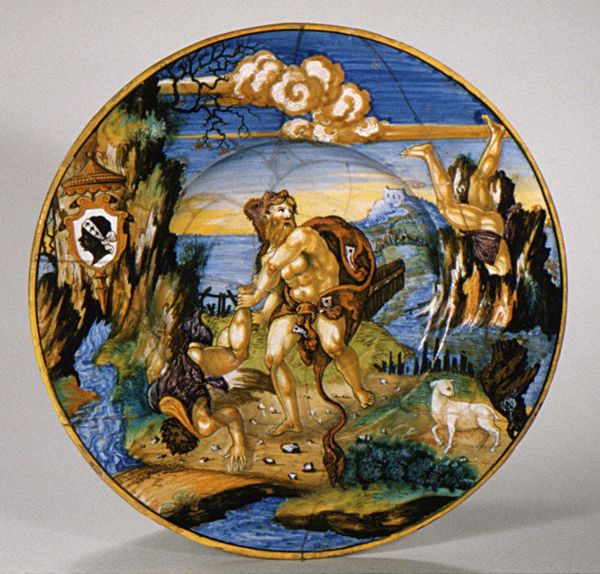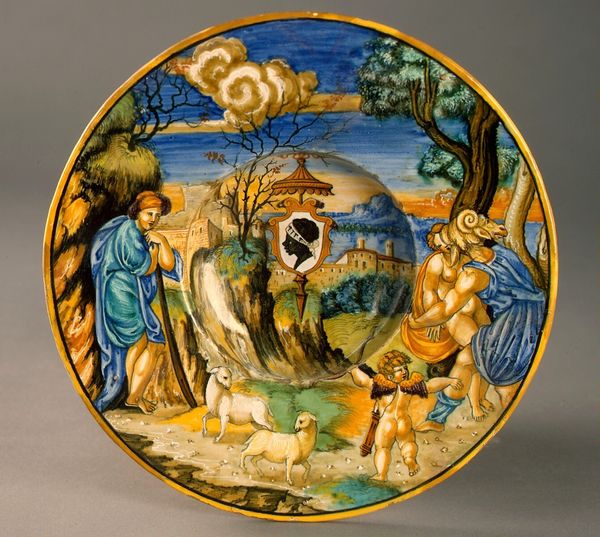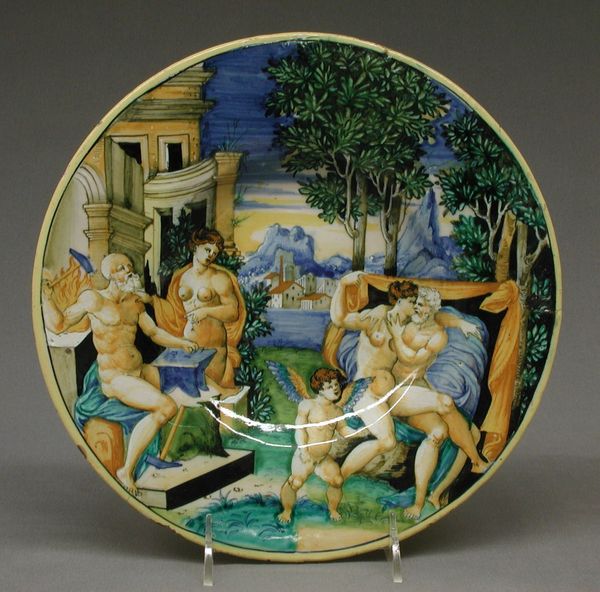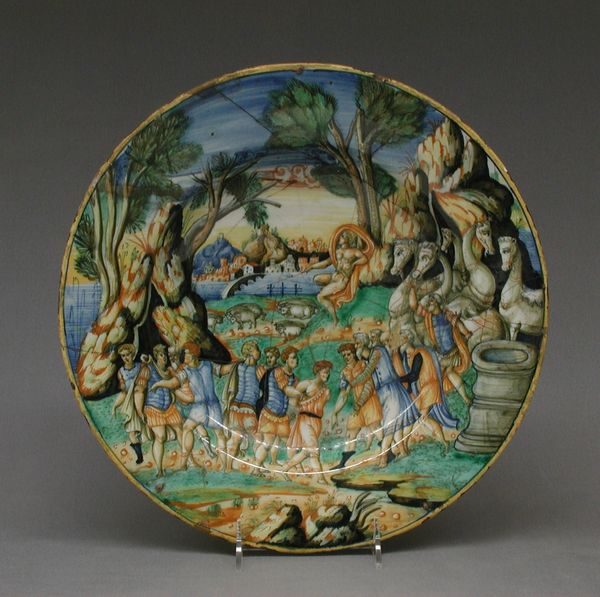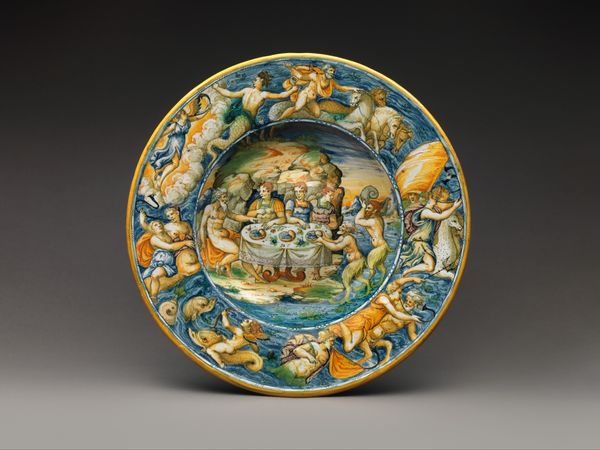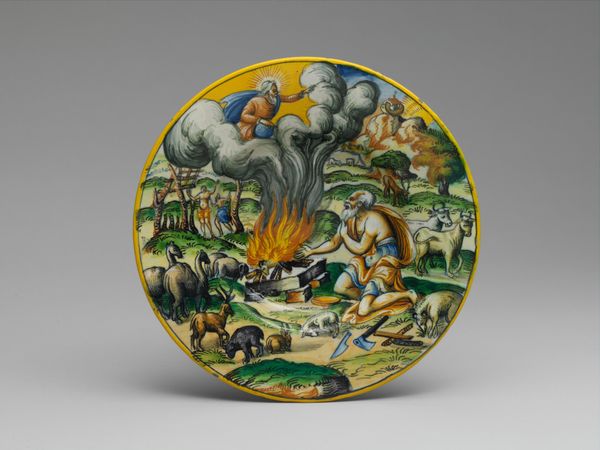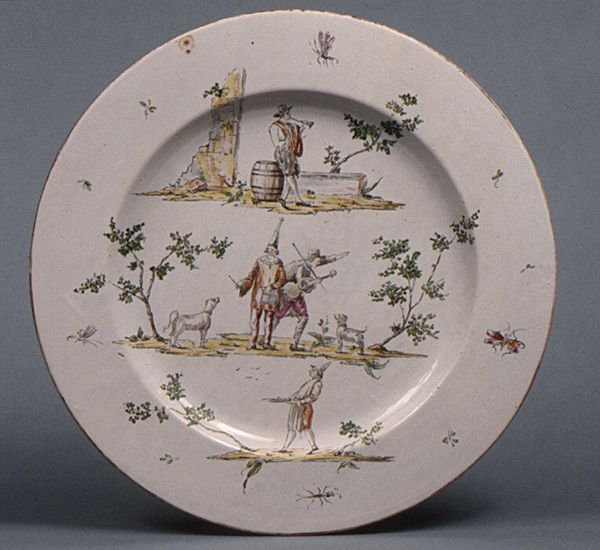
painting, ceramic, sculpture
#
painting
#
landscape
#
ceramic
#
figuration
#
11_renaissance
#
sculpture
#
ceramic
#
history-painting
#
decorative-art
Dimensions: Overall (confirmed): 1 1/2 × 9 in. (3.8 × 22.9 cm)
Copyright: Public Domain
Curator: What strikes me first is the raw emotional energy packed onto this small, circular surface. Editor: Indeed. This piece, attributed to the Fontana workshops, is a maiolica dish created between 1545 and 1565. It’s currently held here at the Metropolitan Museum of Art. Maiolica, of course, involves painting onto tin-glazed earthenware. Curator: The glazes create such a vibrancy, almost violent in their intensity. The figures feel poised between states, moments before something irrevocable happens. The tension is built primarily through line, don’t you think? Editor: Undeniably. Observe how the composition directs your gaze toward the drama unfolding center stage: Abraham, about to sacrifice Isaac. The painter masterfully uses a limited color palette—ochres, blues, greens—to accentuate the drama. Look how those dark greens along the borders bracket the scene. Curator: And those turbulent clouds gathering above... the dramatic landscape itself participates in the story. One sees the familiar motifs of the Italian Renaissance, reimagined. The dish’s curvature amplifies the psychological weight; the story literally bends around itself. It forces an engagement; these objects held a prominent role in everyday life. To be served on this plate… it would certainly start a conversation. Editor: These objects did far more than merely 'start a conversation'; the scene represents more than personal convictions—divine authority, the acceptance of religious imperatives, or blind submission to what one doesn’t comprehend. It suggests themes of faith and obedience deeply embedded within the period’s cultural narrative. Curator: Yes, it functions on many symbolic levels. The angel descending at the top, stopping the act... It speaks to the possibility of divine intervention in the bleakest of moments, representing a release from obligation and the ultimate triumph of mercy. It reflects psychological, moral, and aesthetic continuity. Editor: It leaves a rather disconcerting impression despite being considered ‘decorative’. There's a complexity to both its making and its interpretation that invites continued investigation. Curator: Absolutely. It really showcases how seemingly commonplace objects can hold powerful cultural and psychological weight.
Comments
No comments
Be the first to comment and join the conversation on the ultimate creative platform.
